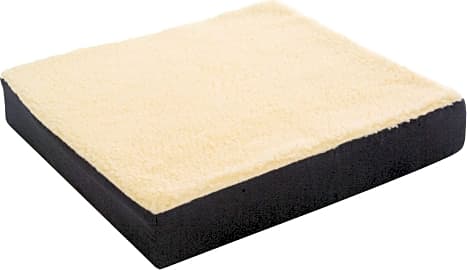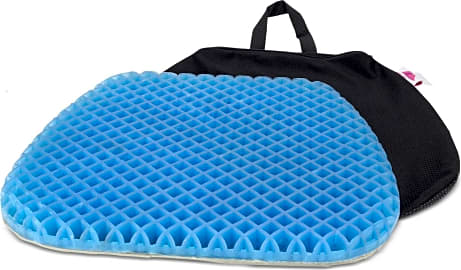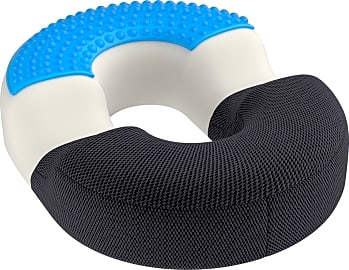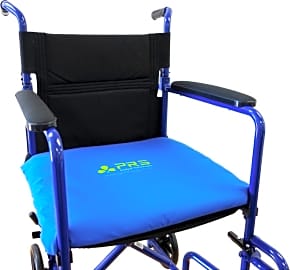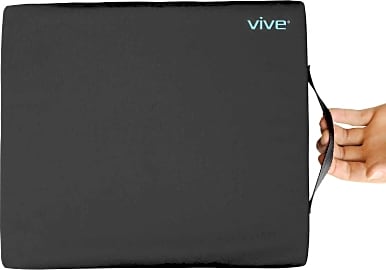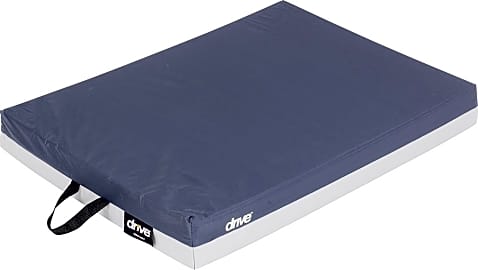The 10 Best Wheelchair Cushions

This wiki has been updated 38 times since it was first published in July of 2015. Whether you are disabled, have an injury, or you just have to sit for extended periods of time for work or travel, one of these wheelchair cushions will make things a lot easier on your posterior, lower back, and spine. They can also help prevent pressure sores and give existing issues some much-needed relief. We've rated them here based on comfort, shape retention, and durability. When users buy our independently chosen editorial recommendations, we may earn commissions to help fund the Wiki.
Editor's Notes
June 03, 2019:
The amount of time you'll be spending in a wheelchair and the climate you live in will go a long way in determining which is the best option for your needs. For example, someone who is recovering from an injury and only plans on being in a wheel chair for a few weeks or perhaps a month or two won't need to buy a top of the line model that will never flatten out. Instead, they can purchase one of the more affordable units, since more than likely they will rarely, if ever, be using it after they are healed. If you are in this group of people, we recommend the Essential Medical Supply Fleece, Bonmedico Orthopedic, Duro Med DMI 2400, and Tektrum Cool Gel. The Bonmedico Orthopedic and Tektrum Cool Gel are better for warmer climates, as they are very breathable. The Essential Medical Supply Fleece and Duro Med DMI 2400 will keep you a little warmer and are better for chilly climates. For disabled people who are permanently in a wheelchair, it is important to buy a model that won't, or will only minimally, flatten out over time, and which offers both comfort and support. The Purap Clinical is actually one of the best options, since it utilizes a combination of gel, air, and foam, which almost no other model does. It's extremely high price may put it out of reach for many consumers, however, which is why it ranked so poorly on our list. On the opposite end of the price spectrum, we have the Vive Liquid Gel Core, which is crafted with layers of both foam and gel, only missing the air component of the Purap Clinical. Unfortunately, its filling has a tendency to bunch up over time, which many people will find inconvenient. Of all the options on our list, the Roho Mosaic is without a doubt the most versatile. You can add or remove air as needed to customize the firmness to your comfort level. It also conforms to shape of the user nicely. Both the Fomi All Gel and Ergo21 LiquiCell Sports deserve special mention, the former because of the smartly designed diamond-shaped grid pattern that allows air to flow through, and the latter for its constantly moving liquid filling that effectively disperses pressure and always retains its original shape no matter how many years you use it.
How To Choose A Wheelchair Cushion
Since their body will regularly interact with the cushion, you want to make sure it isn't made from any fabrics that could irritate a skin condition.
The seat in most wheelchairs is made of thin fabric that doesn't provide much support or comfort. For people who only need to use a wheelchair sparingly, this may not be a problem, but some individuals spend all of their waking hours in one and should be as comfortable as possible. It's important that the cushion properly aligns the skeleton since this prevents any imbalance of pressure on the body and allows for regular movement. If the user has some skeletal deformity, that has to be taken into consideration as well since there are cushions that can help correct that.
If someone is going to spend most of their time in a wheelchair, they should receive a postural assessment. This will help determine which parts of the body aren't corresponding properly to the other parts and can help you choose the best wheelchair cushion. Depending on someone's body symmetry, they may need a cushion that has plenty of give and molds to their body, or one that is very stiff. In the postural assessment, the therapist will also evaluate the person's skin texture. Since their body will regularly interact with the cushion, you want to make sure it isn't made from any fabrics that could irritate a skin condition.
A musculoskeletal exam is also an important part of finding the correct wheelchair cushion. This will find any abnormalities in the positioning of the pelvis, like a posterior or anterior tilt, asymmetry or obliquity. Some cushions can help push the pelvis back or forwards slightly to adjust the user's particular abnormality. Finally, you should consider the user's daily activities. Will they spend a lot of time getting in and out of cars? Do they require help using the bathroom and getting into bed? This will help you decide on smaller details of the cushion, like if it needs to be lightweight and foldable.
Additional Features To Consider
Once you've spoken to a medical professional to determine which type of wheelchair cushion is best for you, there are a few extra features to look for that can make it more convenient. Look for a cushion that disperses body weight, so there isn't too much pressure on one's lower back or tailbone. This will also prevent an indent from forming in one place in the cushion over time. Some cushions are filled with cooling gel, which can help moderate a person's temperature.
This will also prevent an indent from forming in one place in the cushion over time.
Cushions with padded, textured tops can provide a nice massaging sensation. Since someone might spend hours on end on their cushion, they'll want one with a cover that's both antimicrobial, to prevent germs from accumulating, and waterproof in case of any spills. If the user doesn't have a lot of upper body strength, look for a lightweight cushion so they can easily lift it and adjust it themselves. Ideally, wheelchair users should do upper body exercises regularly so they can handle lifting a slightly heavier cushion, but some may have disabilities that prevent that. A small carrying strap can also be very helpful.
Cushions with memory foam cores are more comfortable and put almost zero pressure on the user. Male users, in particular, might want a cushion with a cut-out in the pelvic area, to relieve pressure on more sensitive areas. Since wheelchair cushions are not permanently attached to the wheelchair, get one with safety straps that can temporarily latch onto the chair. This will prevent the cushion from sliding when the wheelchair is in motion. For those pushing others, it is important to learn the best and safest way to push someone in a wheelchair.
The History Of Wheelchairs
The first official wheelchair was called an invalid's chair and it was developed for King Philip II of Spain in the late 1500s. The inventor of this chair is unknown but in 1655, a man named Stephan Farffler, who historians believe was either a paraplegic or an amputee, created the first self-propelling wheelchair. In 1783, an English man named John Dawson improved on the design and created a chair that moved on two large wheels and one small one. It was called the Bath Wheelchair (for the designer's hometown in Bath) and was the most-sold model for much of the 19th century.
The first official wheelchair was called an invalid's chair and it was developed for King Philip II of Spain in the late 1500s.
In the late 1800s, several improvements were made to the wheelchair that are still seen today, like rear push wheels and hollow rubber wheels. 1932 saw the invention of the first folding wheelchair. A man named Harry Jennings made it for a paraplegic friend of his. He would go on to found the wheelchair supplies company, Everest & Jennings. In 1953, a member of the National Research Council of Canada created the first electric wheelchair. It was made for veterans who were injured in World War II.
Some of the most recent technology invented relating to wheelchairs isn't a chair at all, but something that goes in a person's brain. Medical device company Braingate teamed up with John Donoghue to create a device that is implanted in a person's brain, and connected to a computer. The person's mind can send commands to the computer, to help them operate their wheelchair.


